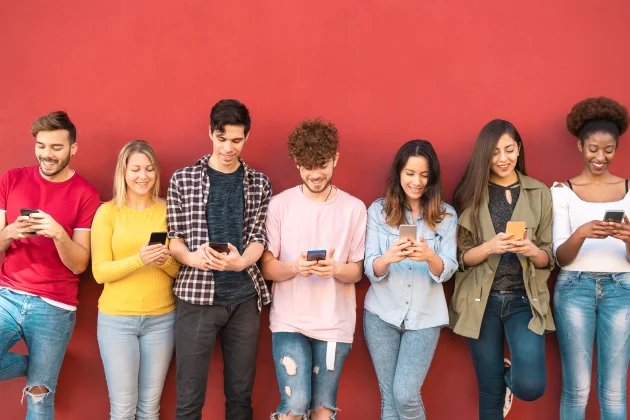This is how you start a successful influencer strategy in arts

Here is another interesting development in art promotion: attracting influencers to pitch your art for you. Cultural institutes have been experimenting with this concept for several years and it is now standard practice (or it should be) to invite influencers to the opening of art fairs, shows, concerts. Together with the journalists and reviewers who were already on the list. Instagram is widely used by influencers, an ideal tool to show art and spread the word.
Must read: The best social media strategy for artists
But how do you, as an art institute or artist, find influencers and how do you use them? Influencing in the cultural sector differs from promoting commercial products such as travel, lifestyle or beauty. These industries may employ influencer agencies with specialised databases or use software and algorithms finding the right people to promote their campaign, brand or product. This is not so commonly used in the arts, requiring a more personal approach.
Things to consider when sourcing influencers
Usually, influencers in other industries -travel, lifestyle, beauty- already have a large following: in a medium sized country, tens of thousands of followers if not more. Depending on the size of your art business, this may be different in art. But having less followers in this branch does not necessarily mean there is much less influence when pitching your particular product. It is important to remember influencers specialising in a particular art subject often have a specific group of followers. They interact on their platforms and are respected.
What about money
In the performing arts, theatres often have the financial capacity to invest in big campaigns for big shows. For museums and galleries this is not always possible, through lack of budget or many small exhibitions.
Once you have decided influencers may be of value to your particular art product or exhibition, look at your available budget. You will be familiar with other PR tools, such as poster campaigns and advertising. You are aware good photography promoting your art is essential. Now, also reserve an amount of money for influencing. Set a budget and set time apart to approach and brief influencers.
Must read: How to become a professional artist!
Tips for the next steps
- You could test the water. If you see you could reach a larger public on social media via influencers, it might be possible to cut down on your own social media budget. To keep spending under control, transfer budget: invest more in influencers, a bit less in your own social media campaign. For instance: if you use vloggers, this might mean you do not have to produce your own videos or movies.
- Do your research. Before contacting them, look at the skills of influencers. Are they excellent writers, is photography their speciality, or are they great in interacting with their followers? In other words: how can they be of use to your cause?
- When you approach influencers, make sure your mail is made-to-measure. Do not send out a general text failing to invite interest. Apply techniques used in bespoke press releases: target and be specific. Mention the place of your show, its theme and relevance to the person or organisation you address.
- When you work with influencers, make your wishes clear. For instance, is it your aim to reach as many readers/viewers as possible? Or to reach a target public, the truly interested in your subject matter? Give a good briefing. Tell influencers what the highlights are of your show, and what you hope to achieve with the influencer campaign. Agree on deadlines and the procedure before publication or posting. Insist on including the correct information on the time and place of your art show. Do you want to see the blog or vlog before it goes public? If not, you allow influencers more freedom. Even if they should voice criticism about your art, what is published or posted will be more genuine. This comes across and will be appreciated by the public.
There is time cost for an influencer highlighting your art. It costs time to visit the opening of an exhibition, to read up on your art, its history, philosophy, techniques used. Writing and editing a good text costs time, as does photography or creating a video, the shooting and montage. To do this well, the hours soon add up. Try it yourself: you might be surprised how much time it costs to create a quality vlog or blog. So, after influencers have posted their on-line contribution on your art, thank them openly on social media. Doing this has more benefits: you show appreciation for the work of the influencer, who will feel valued. And sharing their posts multiplies your online reach. This is how the snowball rolls.


